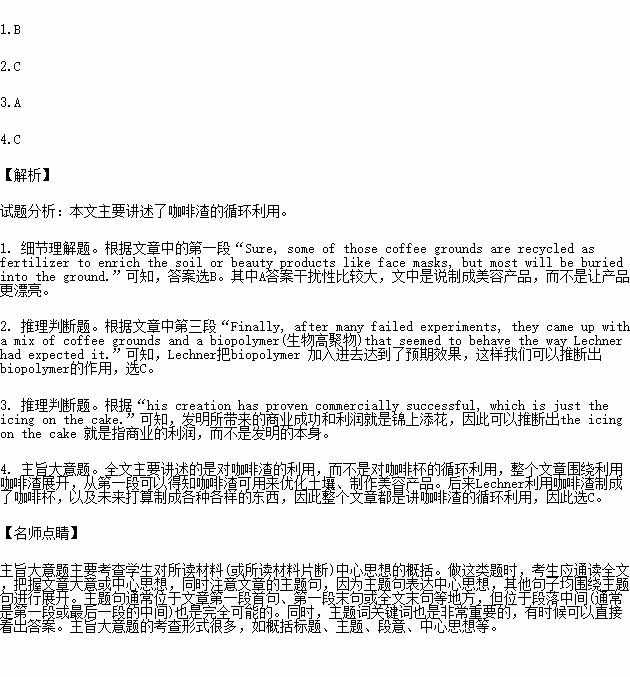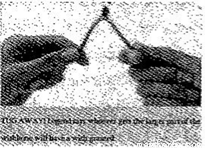题目内容
For every cup of coffee you made, about two spoons of grounds end up in the waste. That doesn’t seem like a lot, but just think about the millions of coffees consumed around the world every single day, and you’ll see the problem. Sure, some of those coffee grounds are recycled as fertilizer to enrich the soil or beauty products like face masks, but most will be buried into the ground. It was while considering this issue that German product designer Julian Lechner came up with a new way of recycling coffee grounds — turning them into tableware.
“We were always drinking coffee at university,” Lechner remembers. “And that’s how I started to wonder. What happens to all that coffee? It was all just getting thrown away.” He began consulting with his professors about ways of using coffee grounds to create a solid material.
“We tried combining with a lot of different things,” Lechner said, “We even tried sugar. That was close, but basically it was a candy cup. It just kept melting after being used three times.” The whole point was to make it last long, so Lechner and his partners went back to the institute to continue their research. Finally, after many failed experiments, they came up with a mix of coffee grounds and a biopolymer(生物高聚物) that seemed to behave the way Lechner had expected it.
“The moment of knowing the cup would actually stand was super-exciting,” he recalls. “It was wonderful to drink that first coffee out of the cup. It proved to be totally worth the wait.” And his creation has proven commercially successful, which is just the icing on the cake. The coffee cups are now present in ten shops across Europe, and the company can hardly keep up with demand, regularly selling out of its stock online.
Lechner will soon launch a larger line of coffee grounds cups and also work on a travel mug. But those are just short-term plans, as Lechner hopes to one day use recycled coffee grounds to create all sort of useful stuff—like sheets and furniture in cafés and restaurants.
1.What do people do with coffee grounds before Lechner?
A. Make products beautiful.
B. Improve the soil.
C. Produce drinking cups.
D. Create solid materials.
2.What can we infer from Paragraph 3?
A. Candy cups can last longer than coffee cups.
B. Coffee grounds are rich in biopolymer.
C. Biopolymer can get coffee cups used repeatedly.
D. Lechner invented coffee cups alone.
3.What does the underlined phrase refer to in Paragraph 4?
A. Profits from coffee cup business.
B. Creation of coffee cups.
C. Decreasing demands for coffee grounds.
D. Consumption of delicious iced coffee.
4.What is the main idea of the passage?
A. A new way of recycling coffee cups.
B. Commercial success from consuming coffee.
C. Recycling coffee grounds into stuff like coffee cups.
D. Different product designers of recycling coffee grounds.
 名校课堂系列答案
名校课堂系列答案

